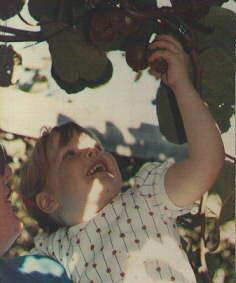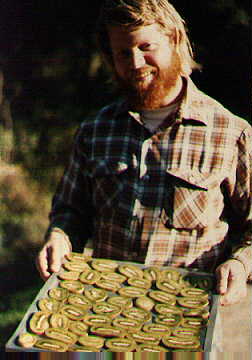
Coastways Kiwifruit

Kiwifruit (Actinidia Chinesis) is a native of the Yangtse Valley in south central China where it is known as Yang Tao. It has been called Ichang Gooseberry, Monkey Peach, Chinese Gooseberry and Kiwi Berry. Europeans discovered the fruit in China about 1850. By the early 1900's several species of the Actinidia had been propagated in New Zealand, England, and the United States, primarily as a novelty or landscaping plant!
The plant was introduced into New Zealand in 1904. During the next 25 years nurserymen developed, cultivated and selected several varieties of large-fruiting plants which became the first commercial varieties. The large, oval, fine flavored Hayward variety was the most successful. In 1935, plants of the large-fruited variets were sent to the United States Plant Introduction Station at Chico, California. In the 1960's researchers there began developing cultural methods applicable to California and encouraged farmers to try the new crop. Thus, the new industry was launched in the early 70's.
Kiwifruit grows on a large, woody deciduous vine, similar to a grapevine and yet looks like a tree. The vines are planted in rows about 15 feet apart and spaced from 15-20 feet apart in the rows. They are trained and supported on strong trellises about 6 feet high. Both male and female plants are needed for fruit set, with pollination primarily by bees. The vigorous vines need well-drained soil, frequent watering, and wind protection. The plants fluorish best in mild temperate climates, though they require winter chilling to develop good flowering and shoot growth. In California the plants bloom in May and the fruit is harvested in October and November. At Coastways, we grow the Hayward variety of Kiwi, grafted onto root stock. Grafted plants start producing fruit in the forth year. Average production is about 6 to 8 tons per acre (from the eighth year on).
Here at Coastways, we have six acres of Kiwifruit which were planted in 1973. The most important cultural practice, besides regular manure fertilizing and weed control, is pruning. Begun usually in January, this two-month job determines the fruit size of the next crop.
 Kiwi vines are becoming more available at local nurseries during the winter months, when it is the best time to plant.
Kiwi vines are becoming more available at local nurseries during the winter months, when it is the best time to plant.
For recipes, about 15 medium sized Kiwis make about 4 cups of crushed or pureed fruit.
This photo shows Tim Hudson holding a tray of freshly sliced Kiwifruit, ready for the fruit drier. Kiwi fruit makes a wonderful snack when dried, and has a fresh, tart flavor.
Please feel free to call for more information and reservations.
(650) 879-0414
Return to the Coastways Main Page
© 1996, 1997, 1998 Coastways Ranch



 Kiwi vines are becoming more available at local nurseries during the winter months, when it is the best time to plant.
Kiwi vines are becoming more available at local nurseries during the winter months, when it is the best time to plant.